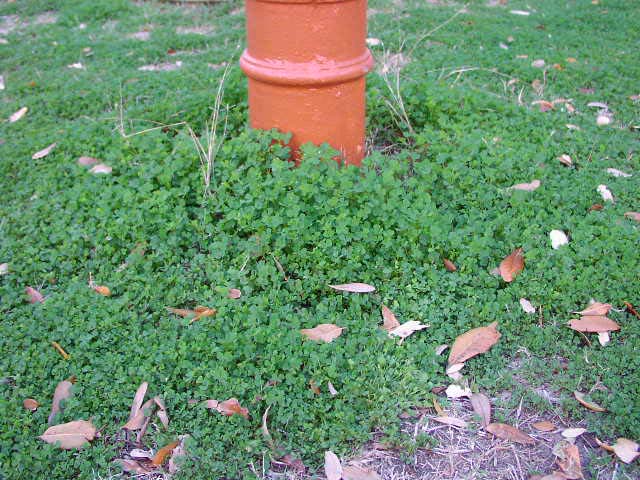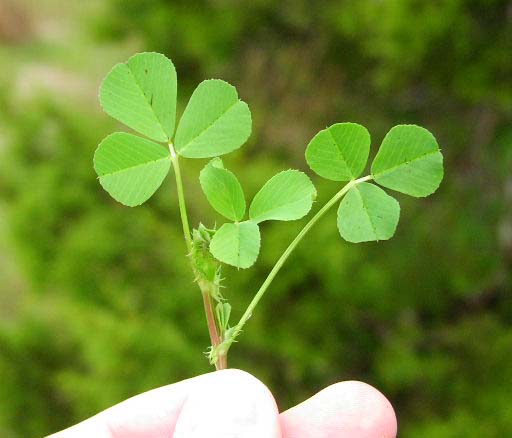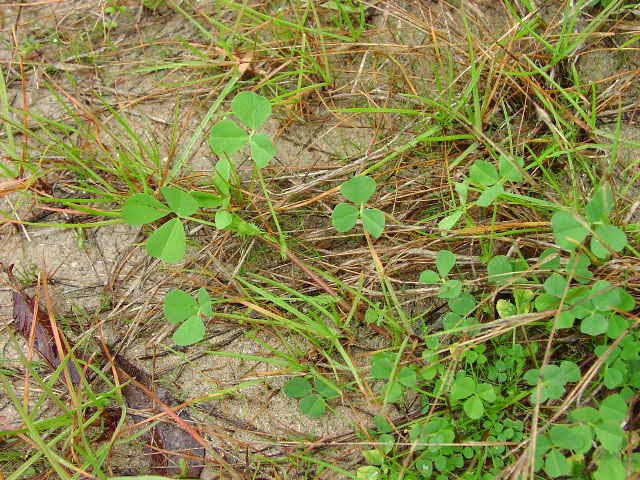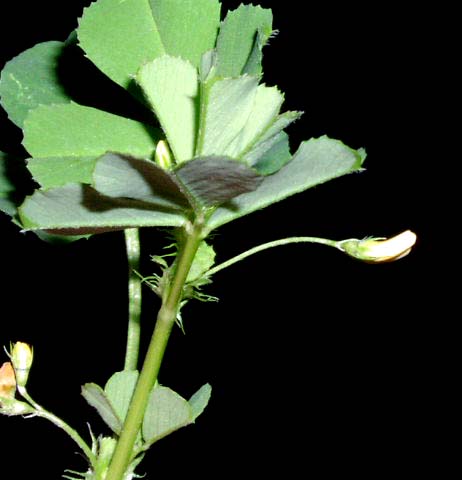 |
 |
| habit and habitat--Medicago polymorpha, like all species of Medicago in Texas, is an introduced Eurasian annual that frequents disturbed areas, particularly lawns (there are many individuals here, all grown together to form one big mass) | leaves--what kind of leaf complexity is present here? Also, notice the prominent pinnate venation in the leaflets. |
| stem--M. polymorpha spend the first part of its life as a rosette of small leaves (as in the bottom right of this picture), and in late Winter sends out long trailing stems with much larger leaves |
 |
stipules (do you remember what stipules are?)--in M. polymorpha, the stipules are incised. Also notice the leaf shape, and how it differs from M. lupulina. |
|
|
|
|
| Leaves and stems are usually glabrous, but sometimes sparsely pubescent. | How can one distinguish
between the closely-related M.
polymorpha (left) and Medicago lupulina (right)? Two ways can be seen here: M. polymorpha typically only has 3-5 flowers per inflorescence, whereas M. lupulina typically has 8-20 flowers per inflorescence. M. polymorpha has stipules that are deeply-toothed, and M. lupulina has stiplues that are only shallowly-toothed. M. polymorpha is relatively glabrous compared to the pubescence of M. lupulina. |

